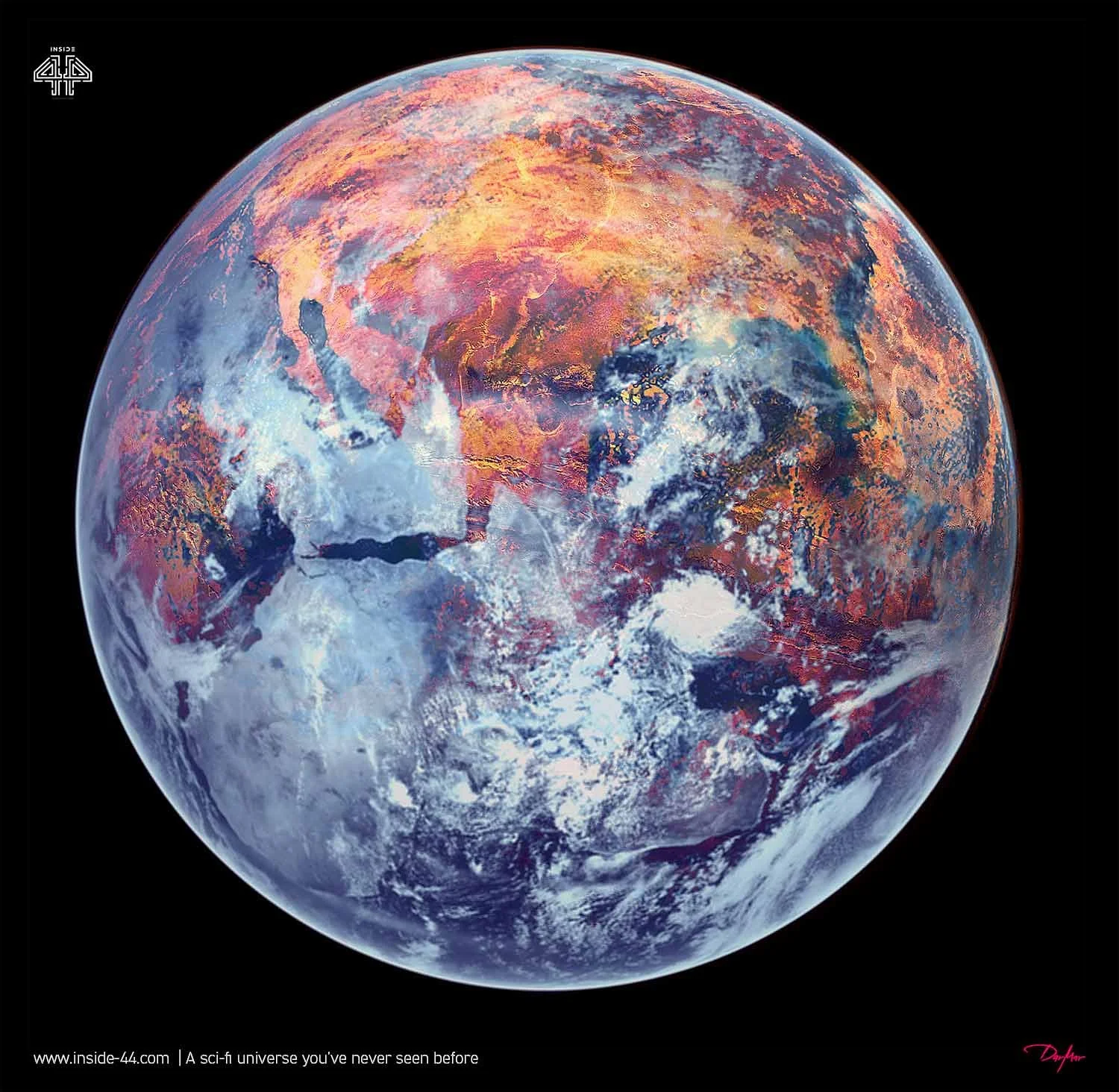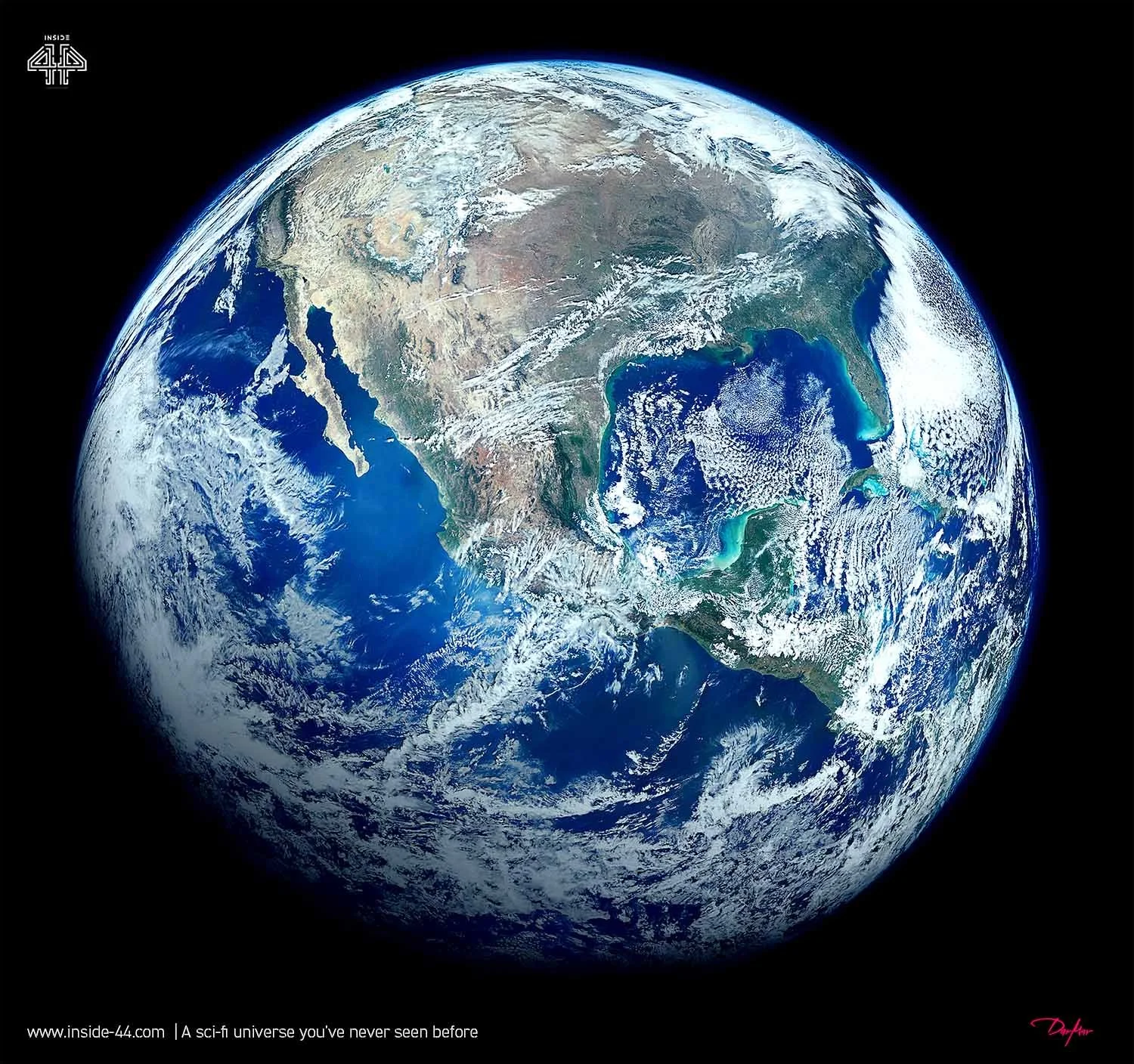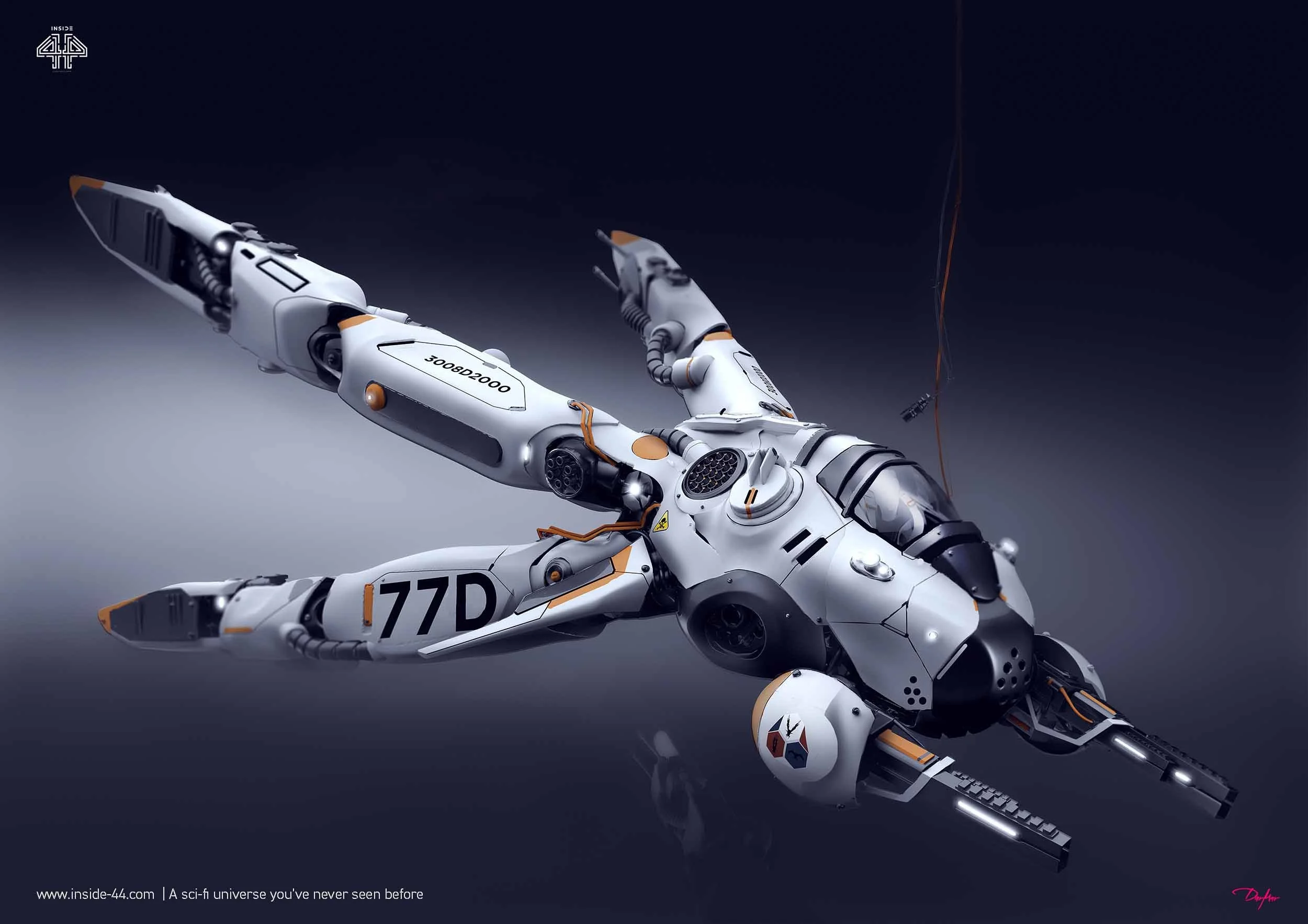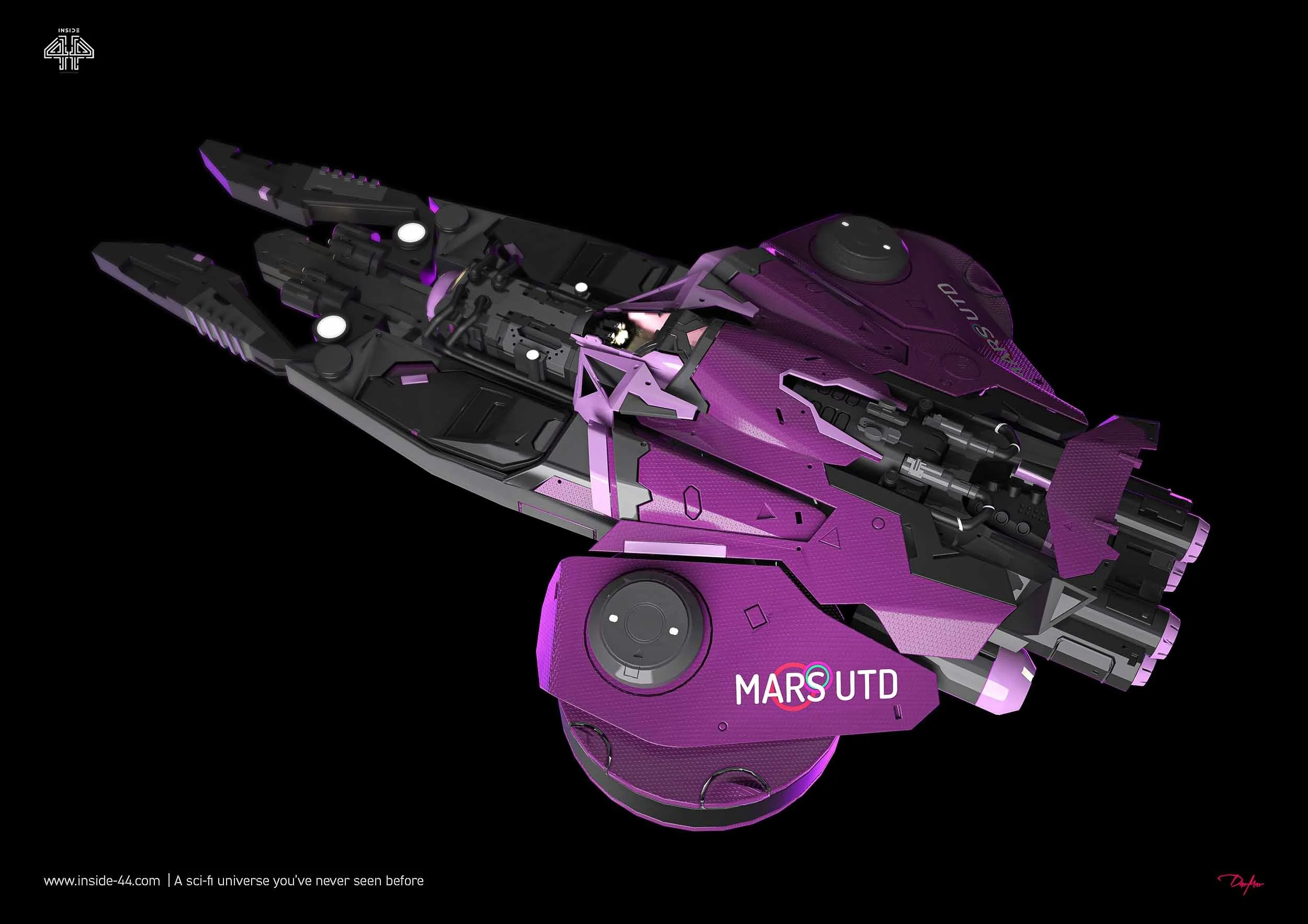INSIDE 44 - A sci-fi universe you’ve never seen before
Inside44 took me a decade to complete, resulting in a richly detailed, 544-page universe.
The story centers on Mars and Earth. In the near future, Earth successfully colonizes Mars. At first, everything goes well both sides prosper under a peaceful pact. But as Mars grows stronger, its people begin to believe they can sustain themselves independently, and that they might be better off without Earth.
Inside44 follows the story of humanity. While it features other species and planets, the heart of the narrative both in design and writing is about human evolution and the possible futures that lie ahead.
“Mars was the second planet colonized by humans. The goal was simple: to create a
place where people could live as normally as they did on Earth. Achieving that re-
quired extensive terraforming—specifically, by launching specialized missiles at both
poles to gradually build an atmosphere.
Over the course of ten years, two main conti-
nents formed: Polaris and Mialis.
Mars is home to three capital cities. Outlaw, named after Frankie Outlaw—the revolu-
tionary who led the Martians to independence in 2476—is primarily inhabited by hu-
mans and their Babylonian allies. Unity is a sanctuary for machines, who gained their
independence after the war. And Babbage, the capital of the Babylonians, was founded
at the perfect moment in Martian history.
Unity, Soni, and Elon are the only three countries on Mars where all races live side by
side.
The rest of the planet remains divided by species, in accordance with the Treaty
of 2477, signed by Martian leader Frankie Outlaw, Babylonian leader Gorro, and robot
leader Sx2.
Mars boasts a powerful economy, driven by its production of advanced military tech-
nology and its rich reserves of masen—a rare stone used as fuel by the Babylonians
and other colonies across the universe.”
PART FROM “MARS - INSIDE 44” BOOK - by Darko Markovic darmar
If you read part from Inside44 book , you will notice Mars was the second planet humans colonized, and it took massive terraforming to make it livable. Over time, two main continents and several powerful cities emerged, each shaped by different species and alliances. After the Martian independence war in 2476, humans, robots, and Babylonians divided the planet through a peace treaty. Today, Mars thrives on advanced military tech and its rare fuel stone, masen, making it one of the most influential worlds in the universe.
I’ve always been drawn to exploring where humanity might go and where we’ve gone wrong in the past. Inside44 was heavily inspired by the Yugoslav wars I witnessed growing up, especially the conflict between Earth and Croatia. Later, elements of the Moon in the story were influenced by Bosnia and Montenegro.
In my stories, I never take sides about who was “right,” because I believe no one truly was. It was one of the darkest experiences for me and my people, and living through it in the ’90s—watching it unfold on television shaped many parts of Inside44. Later, Montenegro’s separation as an independent country in 2006 also sparked further ideas for the narrative.
While history inspired the foundations of the story, my outlook on the future is rooted in optimism. I’ve always believed in finding light even in the darkest moments. As someone once told me when I was younger: “Life has humor even in the worst moments of our lives.” To me, the future will still bring human wars, because conflict seems to be part of our nature—but what truly matters is how we approach them, and the hope that good will ultimately prevail over evil.
PART FROM “EARTH - INSIDE 44” BOOK - by Darko Markovic darmar
Earth is the birthplace of humanity and the starting point for all human expansion. Theplanet has undergone major changes since Mars and the Moon gained their independ-ence. During the war, Terrans were forced to unify like never before, forming powerful alliances between once-divided nations.
Today, Earth is primarily inhabited by humans and robots, with a small population of Neptunians making up about 1% of its residents. The planet enforces strict immigration laws but offers heritage visas to any human who can trace their genealogy back five generations.
The global capital is located in Paris, accessible from anywhere on the planet via the Capsule—an underground, high-speed rail system with trains reaching speeds of 600 mph. Earth draws countless intergalactic visitors, eager to experience its exotic plant life and futuristic cities. These ultra-modern metropolises rose from the ashes of the early 21st-century climate crisis. Now, Earth boasts one of the most temperate climates among habitable planets, along with some of the cleanest air and lowest pollution levels in the Milky Way.
This conflict is one of the pillars of Inside44, shaping many of the social and geo-economic situations that define humanity’s future in the story. Humans love things that are simple and predictable—like 2+2=4—but life doesn’t always work that way. More often, it throws us curveballs, and we’re forced to find a way to make 2+2 equal 4 again.
The same happens in Inside44: even though Earth and Mars don’t see eye to eye, they’re faced with challenges that force them to confront their differences—and sometimes, even discover an unexpected bond.
INSIDE 44 - ALIVE vehicle EARTH fighter
One of the things I wanted to explore in Inside44 was hard-surface design and how to weave it naturally into the story. My idea was to create unique vehicles, each representing a different planet. Today I’ll share two examples—Earth A-Live and Mars Needle—but there are many more inside Inside44 if you decide to dive deeper: designedbydarmar.com/buyinside-44
Each planet has its own flags and graphics, allowing their ships to be instantly recognizable when crossing paths in space. For instance, Hope 2069 features a robotic aesthetic that reflects its nature.
The Earth A-Live is designed to symbolize the five planets still under Earth’s control. It has five operating modes, each representing one of those worlds. While Earth has lost Mars and the Moon, it continues to dominate elsewhere. Its striking white form was chosen by Freeman, who wanted a pure and minimal design to reinforce Earth’s political image - projecting itself as always right, always pure.
INSIDE 44 - MARS NEEDLE vehicle fighter
On the other hand, we have the Mars Needle. Frankie Outlaw envisioned a ship that was slim, agile, and completely different from Earth’s designs—a clear statement that Mars no longer belonged to them. Unlike Earth’s vehicle, the Needle isn’t about multiple functions; instead, it stands as a technical marvel of engineering and aerospace design.
Its color was also symbolic. Outlaw replaced Mars’s traditional red with purple, reflecting the planet’s new identity after the warno longer just human, but shared with Babylonians and robots.
Why did all of this happen? Well, that’s a story waiting for you inside Inside44: designedbydarmar.com/buyinside-44




